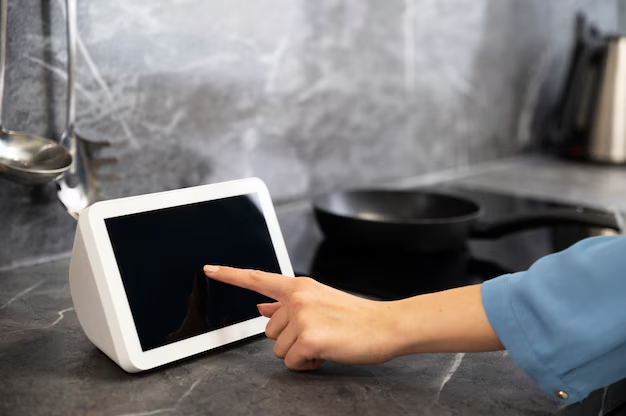Navigating the Defrost Reset in Your Samsung Refrigerator: A Comprehensive Guide
Your refrigerator is an essential home appliance, quietly keeping your food fresh and your beverages chilled. However, like any complex piece of machinery, it can sometimes encounter issues. Among the more common hiccups is the need to reset the defrost button. If you're struggling with this in your Samsung refrigerator, you're not alone. Let's delve into a systematic, approachable guide designed to walk you through resetting your fridge's defrost system effectively.
Understanding Your Samsung Refrigerator's Defrost Functions
Why Defrosting Matters
Your refrigerator’s defrost system plays a crucial role in keeping it running smoothly. Frost build-up can impair your fridge's efficiency, increase energy consumption, and potentially spoil food. Samsung refrigerators are predominantly equipped with a defrost button that aids in managing frost levels, ensuring optimal performance by periodically allowing built-up ice to melt away.
Anatomy of the Defrost System
Modern Samsung refrigerators typically integrate self-regulating, electronic defrost systems. These systems include sensors, heaters, and timers working in unison to prevent ice build-up. When any part of this system fails, it might necessitate a manual reset. Understanding this system is vital in diagnosing any defrost-related issues correctly.
Signs You Need to Reset the Defrost System
Common Indicators
Before you dive into resetting processes, identify these key indicators that signal frost issues or the need for a defrost cycle reset:
- Puddles of Water: Accumulated water within the fridge or on the floor.
- Thick Frost Layers: Frost visibly encasing freezer walls or shelves.
- Unusual Temperature Swings: Inconsistent cooling or unexpected warming.
- Loud Compressor Activity: Unusual noise indicating overstressed cooling mechanisms.
Regular Maintenance
Regularly checking these symptoms and maintaining your refrigerator can preemptively thwart more significant problems, minimising downtime and the need for resets.
Step-by-Step Guide to Resetting the Defrost Button
Preparation
Before commencing a reset, it's crucial to ensure your refrigerator model and manual provide specific instructions for this task. While these steps are quite standard, minor variances may occur across models.
- Power Down: Always unplug the refrigerator to prevent electrical hazards.
- Remove Items: Clear perishables to a cooler or secondary unit.
- Access the Control Panel: Generally located inside the fridge section; access might require removing certain shelves.
Performing the Reset
There are typically two reset processes depending on your fridge's model: physical button reset or digital control reset.
Manual Button Reset
- Locate the Button: The defrost button varies by model but is commonly found at the back or bottom.
- Press and Hold: Depress the button for 8 to 10 seconds; you may hear a clicking sound.
- Release and Wait: Allow several minutes for the system to reset.
Digital Control Reset
- Find the Controls: The reset options are often integrated into the digital display.
- Navigate Settings: Follow your fridge’s manual to locate the reset option within the menu.
- Initiate and Confirm: Confirm the reset action as directed by the system prompts.
Testing the Reset
Once the reset is complete, power up the fridge and monitor its function over the next few hours. Check for:
- Restoration of normal cooling levels.
- Cessation of unusual noises.
- Absence of defrost warnings on the display panel.
Addressing Persistent Issues
When the Reset Fails
If resetting does not resolve the issues, there may be underlying mechanical problems that require professional attention. Considering contacting Samsung support or a certified technician for further assistance.
Long-Term Solutions
Apart from mechanical fixes, regular maintenance such as cleaning, keeping vents clear, and not overloading the refrigerator can ensure smoother operations.
Proactive Measures to Enhance Refrigerator Efficiency
Regular Cleaning Routines
Periodically cleaning the interior and removing expired food helps maintain efficient airflow and reduces the strain on your refrigerator’s components.
Optimal Loading Practices
Ensuring proper air circulation by not overcrowding and keeping items away from the vents is vital. This approach maximizes cooling efficiency and minimizes ice build-up.
Temperature Monitoring
Frequently checking your fridge and freezer temperatures and adjusting according to the interior workload can prevent unnecessary defrost cycling.
Summary of Essential Tips
🔹 Regular Inspections: Keep an eye on frost levels and puddles of water.
🔹 Quarterly Cleaning: Maintain a routine cleaning schedule to prevent ice build-up.
🔹 Proper Usage: Avoid overfilling compartments and ensure vents are unobstructed.
🔹 Temperature Checks: Adjust settings based on load and environmental factors.
🔹 Professional Maintenance: Seek expert advice if issues persist beyond resets.
Navigating Future Problems with Confidence
Armed with this comprehensive guide, you're well-equipped to manage and reset your Samsung refrigerator’s defrost button. Regular upkeep and a mindful eye on performance indicators will not only extend the life of your appliance but will also promote its optimal functioning. Balancing convenience and care ensures your refrigerator continues to serve your household efficiently, consistently delivering year-round satisfaction.
